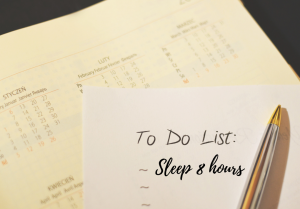
If life were a game, how can you win?
Like every game, there are a certain set of rules that must be followed. There are points to score. Penalties to avoid. And if you want to be really successful at the game, then you want to study and understand all the rules.
But when it comes to winning in the game of life, just what are the rules – and what happens when we don’t choose to play by them?
The simple answer is that there is no one set of rules that everyone has to follow to win at life. Sure, we may have cultural, legal, and even social rules, but these pale in comparison to the rules of leading a successful and fulfilling life. These rules of the game are a bit harder to figure out, simply because these rules are made – and can be broken – by you.
Let’s face it: when we live by someone else’s rules, we can never truly enjoy a rewarding personal and professional life. For example, if you’re continually striving to live by the rules of someone who’s been a major success in your field or industry, then you’ll never get the opportunity to experience what it’s like to trail-blaze your own path. You’re living life by someone else’s game rules – and because you’re not that person, you’re setting yourself up to lose.
Let’s look at an example of someone who’s certainly living by his own set of rules: Charlie Sheen. No matter what your opinion may be about him, there’s no denying that he makes and succeeds at his own game. When CBS booted him off of his wildly successful sitcom “Two and a Half Men,” he didn’t beg for them to take him back. Instead, he made a different set of rules by launching an extremely popular viral video channel and comedy tour worth millions of dollars. His catchphrases are so beloved that they’ve even made their way into our cultural zeitgeist (“winning” and “tiger blood” are a few that come to mind).
Now how does this relate to our personal lives? While you don’t have to go to the extent of Charlie Sheen (in fact, as a personal life coach I wouldn’t recommend it), it’s important to define success on your own terms, not others. Playing by another person’s set of rules is tiring – after all, no game is enjoyable when you can’t possibly win at it.
By changing the rules of the game – or playing a different game altogether – you’re already on a path to winning at the game of life.
To know more about how a life coach can help you win the game of life, contact Discover You Coaching.





 Can’t Sleep? Help and Treatment for Insomnia
Can’t Sleep? Help and Treatment for Insomnia Help for Sleep Problems
Help for Sleep Problems Natural Remedies
Natural Remedies Get to the root of the problem
Get to the root of the problem of stress and work towards alleviating it. Practice healthy living. Follow a healthy and habitual regimen. Eat right, sleep well, follow a hobby, and most essentially be grateful of the body and treasure it.
of stress and work towards alleviating it. Practice healthy living. Follow a healthy and habitual regimen. Eat right, sleep well, follow a hobby, and most essentially be grateful of the body and treasure it. Place the palms on the thighs and keep the spine erect.
Place the palms on the thighs and keep the spine erect. eight hours of sleep, yet most adults are lucky to get six hours of sleep.
eight hours of sleep, yet most adults are lucky to get six hours of sleep. Bedrooms are for sleeping. They are not watching television, surfing the Internet, or doing laundry. A bedroom should be a safe haven, associated with restfulness and relaxation, and bringing a television or a computer into that safe haven can increase anxiety. If the body is conditioned to do little more than sleep in the bedroom, it will know exactly what to do when it comes time for sleep, and the mind will follow suit. Occupying the mind with distractions is detrimental to an easy sleeping environment.
Bedrooms are for sleeping. They are not watching television, surfing the Internet, or doing laundry. A bedroom should be a safe haven, associated with restfulness and relaxation, and bringing a television or a computer into that safe haven can increase anxiety. If the body is conditioned to do little more than sleep in the bedroom, it will know exactly what to do when it comes time for sleep, and the mind will follow suit. Occupying the mind with distractions is detrimental to an easy sleeping environment.